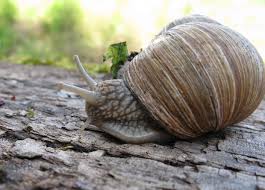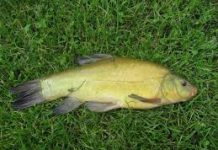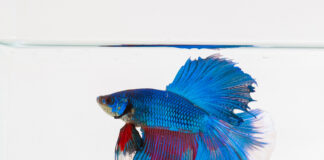Snails might indeed be the slowest & boring species living on earth but if you observe precisely, they are really impressive. The anatomy of slug eating or snail eating is quite fascinating. You won’t believe it, but it’s much more interesting than you ever thought about it.
Snails can provide an interesting twist, both in color and diversity to any aquarium. These little critters will add spice and a new sense of adventure especially if the excitement you once felt about new fish, live rock, or aquascape is starting to wane.
Moreover, like the fish and the other aquatic organisms that went before it, snails will ask you a specific way of nurturing and diet. You’ll face such questions as “what do snails eat?” or “what type of snails will be suitable for my aquarium?”
If you really ever thought, what do they eat in the first place?

Snails are developed to eat each & everything. There are herbivorous, carnivorous, omnivorous, & also likes to eat any deceased plants & animals. These wondrous species eat worms, vegetation, rotten vegetation, animal waste, & fungus.
Also, with the addition of snails to your freshwater or marine tank, you’ll need to reach a delicate balance so that your snails will thrive, but that they also do not reproduce to profusion.
Fortunately, their diet will address many of these concerns. The burning question then is:
Quick Navigation
- What Do Snails Eat?
- The Types of Snails
- What is the Diet of Snails Living on Earth?
- Diet of Land Snails as a Pet
- What is the Diet of Snails Living under the sea?
- Diet of Sea Snail as a Pet
- What is the Diet of Baby Snails Just After They are Born?
- The Diet of the Freshwater Snail
- Supplementing Food for Your Snails
- Is There Any Snail Who Eats his Own of Kinds?
- How Long Can Snails Survive Without Eating?
- How Much Can Snails Eat?
- What to Feed-in Snail Farm? Do Snails Drink Water?
- 5 Important Factors to Consider for Healthy Growth of Snails
- Conclusion
What Do Snails Eat?
Quick Answer:
Just about anything. That’s no joke. There’s a substantial difference between species but similar to freshwater shrimp; snails are primarily omnivores who will feast on anything into which they can sink their myriads of teeth.
From otherwise uneaten fish food, plant matter, algae, various detritus, and even dead or decomposing fish, snails will happily clean up the organic mess in your tank. Some owners would even choose to feed their snails algae discs.
Snails love this type of feed since it settles at the bottom of the tank, within their reach, and also because snails are natural algae eaters, or more accurately, lovers.
Additionally, if you add a snail to a mature tank that has a moderate build-up, you can even get away with very rare feeding times.
After a while, your snail will have cleaned up much of the algae, whether it’s on the substrate, plants, or your aquarium’s glass walls.
But Wait, There’s more!
Although it may be true that it would be easier to overfeed snails than to underfeed them, a basic grasp on their background, eating habits, and diet will assist you greatly in improving their health, intensifying shell color, and keeping a check on their fast-growing population.
Additionally, this knowledge will become even more significant if you plan to take care of more than one snail, or several from different species.
With these points in mind, let’s take a quick look at the snail and its eating habits.
How Snails Eat
Snails are very efficient eaters. If you’ve ever had one on your hand or up close, you’ll notice that their “mouths” are close to their antennae-looking tentacles. It may have even tried to taste you.
The rough sensation you feel from its mouth is due to its myriad of teeth that rip food like a file. Their mouth functions more like a tongue, and their eating process is closer to gnawing than chewing.
The Types of Snails
There are two main kinds of snails: land snails, and aquatic snails. Since were in the context of aquarium-keeping, we’ll focus solely on aquatic – freshwater snails and their diets.
Aquatic or water snails are further divided into two groups: freshwater snails as well as marine or sea snails. Obviously, you can find sea snails in saltwater and oceans. A good example of this variety of snail is the cowry.
Again, with regards to aquariums, the most common snail pets are those you can find in freshwater.
Habitats notwithstanding, both freshwater and sea snails subsist on a diet that is primarily algae, plant matter, and organic detritus.
This diet means they’ll also easily feed on decaying plant or fish debris as well as fish food that may otherwise go uneaten.
What is the Diet of Snails Living on the Land?
Snails living on the land are often found dwelling somewhere on the grass or plant. They eat a variety of food found in their natural habitation. Most of the time, the stuff they eat depends on where they live or from what kind of species they belong to.
Some of the most common & conventional food for them are plants, fruits, & vegetables. Often, plants in the last stage of their life become a super healthy meal for them.
Diet of Land Snail as a Pet
As a pet, land snails are the calmest & patient kind of herbivorous species. For them, you can use vegetables, fruits, & dead plants as their diet. The quantity of food they consume is highly dependent on their size & type. So, it’s best if you understand what kind of your snail actually is, it can help you identify the best diet for him.
Most of the snails living on earth consume a wide variety of plant parts. For example, leaves, stems, crops, barks, & fruits. Some of the snail species on land enjoy fungi, mushrooms, & algae. These are some of the most important & healthy foods for snails who are pets. By finding & giving them what they like the most, an owner can make his pet snail growth life healthier.
What is the Diet of Snails Living under the sea?
There are various kinds of snails all over the world. Also, some of the species from them learned to survive underwater. They are called sea snails or saltwater snails. Often, people get misdirected by their name but they can also survive in clean water.
Snails who are living in the sea can be herbivorous, carnivorous, & omnivorous. So, they can eat various kinds of things for survival. Some of their favourite diets are small organic plants & animals, dead fishes, bivalves, and algae.
Diet of Sea Snail as a Pet
As a pet, these creatures don’t need much from human beings other than some dead plants & veggies sometimes. All that they want will be around them soon. I am sure you have seen snails inside an aquarium but never focused on the cleanliness inside. What if I tell you, it isn’t a work of a human it’s the creature living inside that aquarium. Sea snails like algae so much that they keep the sides of the aquarium clean from it. They also like dead plants & some other tiny organisms found in the sand under the sea. All you need to do is to assign them the responsibility of keeping the aquarium clean from algae. It’s a perfect diet for them if you have a sea snail as a pet.
What is the Diet of Baby Snails Just After They are Born?
Often, people find themselves in difficulty welcoming a new baby snail as a member of their family. In the above paragraphs, we have talked about the diet consumed by adult snails. But we hadn’t talked anything about what do baby snails eat when they get born?
Well, there is nothing to be worried about, because whatever an adult snail eats the baby snail will eat. However, the quantity differs because they are small, they eat less. Also, they need proper care regarding their diet because their shell isn’t as much strong as a grown-up. So, it’s better if you present their diet twice a day to make their shell stronger & life healthier.
The Diet of the Freshwater Snail
Freshwater snails will feast mainly on four different kinds of aquarium material: Algae, organic detritus, plants, and meat.
Algae
Algae may just be the snail’s favorite food source since there is usually an abundant supply in their natural habitats as well as in aquariums.
You’ll find these algae-eating snails grazing on aquarium rocks, substrate, and along aquarium walls where algae collect naturally.
Freshwater snails’ love of algae is a big reason why Algae Flakes are a big thing among aquarists who rear snails in their aquariums.
Popular algae-eaters are the Ivory Snail and the Nerite Snail.
Organic Detritus
The snail’s love for scavenging is a major reason as to why aquarists acquire these invertebrates. Like their invertebrate cousins, shrimp, snails are incredibly useful at keeping a tank clean.
Whether it’s uneaten fish food, organic debris, decaying plant material, or even dead fish, you snails will be happy chewing, or rather, gnawing away.
Good examples of scavenging snails are the Ramshorn Snails and Pond Snails.
Plants
Some snails are more inclined to partake of the plants in your aquarium, whether it’s plant matter or the aquarium plants you already have.
This voracious appetite for anything green, including algae, is the reason why many aquarists take great care when nurturing plant-eating snails.
Hence, when choosing to add “Vegetarian” snails such as Apple snails or Mystery snails, ensure that you keep both the population of snail to plant so, you won’t end up with a deforested aquarium.
Meat
Lastly, you can also get snails that are more inclined to feast on live prey. The appropriately named and famous Assassin Snail is a good example of a meat-loving snail.
In fact, aquarists commonly use the Assassin Snail to both control and decimate other snail species. Additionally, these snails typically do not present the problem of overpopulation as they tend to breed relatively slower.
Meat-eating snail prey on small shellfish or bivalves, so make sure to have enough “disposable” invertebrates, such as decorative shrimp or shellfish to keep meat-lovers satisfied.
Supplementing Food for Your Snails
Although the four food groups above are the typical diet that aquatic snails will find in the wild, that shouldn’t limit you when supplementing their diet with healthy and nutritious food. Below are some more feed ideas for your aquarium gastropods.
Fruit
You can provide your snails a diverse diet of fruits which will all be very easy for them to eat and digest. Simply follow these guidelines for a healthy fruit diet:
- Choose fruits that will hold up well underwater such as cucumbers, apples, and pears. Peeling these fruits beforehand will also make them easier for your snails to eat
- Avoid acidic fruits such as lemons or tomatoes.
- Ensure that you thoroughly scrub and wash fruit to remove and harmful pesticides and other chemicals.
Vegetables
Select vegetables will also be very popular among your pet snails especially if they’re plant-eaters. They’ll quickly and happily learn to eat leafy vegetables, carrots, lettuce, and the like.
Additionally, you should prepare to produce in a similar way to fruit: Remember to wash them thoroughly; peel them if you can, and soften the harder vegetables like carrots via blanching.
Don’t forget to let them cool completely though before giving them to your snails.
Store-bought Food
It may be quite difficult finding specialized food for your snail. However, they will love algae wafers, as well as shrimp and fish food as long as they are the kind that will sink to the bottom of your tank.
Alternatively, aquarium food that sticks to the side of your tank will be ideal for your snails.
Calcium Supplements
One of the best things about keeping snails is their beautiful and colorful shells.
However, Aquarium hobbyists know that you’ll only get the healthiest, strongest and most colorful shells from their snails if they have enough calcium in their diet. Calcium also helps shells heal faster and grow back stronger or thicker.
Before supplementing your aquarium with calcium, ensure that your tank water needs the supplementation since many aquariums already have adequate levels of this water parameter.
If you do need to enrich your tank with more calcium, ground coral, egg shells, and cuttlefish bones are excellent calcium sources for your precious gastropods.
Is There Any Snail Who Eats his Own of Kinds?
Yes, if you are thinking about cannibalism in the snails, there are various kind of snails who eat their own brothers for survival. Some examples are Rosy Wolf Snail & Assassin Snail, who only survives by eating other slugs.
How Long Can Snails Survive Without Eating?
There are thousands of snail species on this globe. With this much diversity, it’s really hard to find identical life histories between any of the snail types. However, there is one thing for sure most of the snails can go without eating for quite some time.
Some of them can survive for weeks & some for couple of months. According to some scientific studies about snails, it is clear that these species can survive up to eight months without food. However, it’s a very exceptional case when snails die due to shortage of food because there are a lot of things for them to eat & they always eat until they are full.
How Much Can Snails Eat?
Snails eat until they are full from their stomach. While keeping snails as a pet, you don’t have to worry about the quantity of food you are giving them. But you can also provide them options in their daily diets. All you need to worry about retaining rotten food from them because it can cause a lot of problems to them.
According to some studies, snails eat 10% of their weight every day. The amount can increase because of the surrounding, nature, & environment. Often, when winter starts approaching, the amount of food they consume increases.
What to Feed-in Snail Farm? Do Snails Drink Water?
The main motto behind feeding snails on the farm is to make them grow swiftly. For that, you have to treat them with their favourite diet regularly. As well as, you need to keep a friendly environment according to them for their best growth & heathier life.
Just like every other living being, snails do need water for their survival. But snail farmers don’t need to provide them water because they get enough of it through their food. More importantly, they also get water from the humid environment (70& – 95% Humidity).
In some cases, if you still need to serve them water, you can give clean drinking water to them.
5 Important Factors to Consider for Healthy Growth of Snails
Many aspects decide the growth of the snails. Some of the most significant factors that you must need to consider for the healthier adulthood of snails are: –
- Quality of Food You are Providing
- Soil Composition for Their Shell Growth
- Temperature of Surrounding
- Moisture Present in The Air
- Density of Snails in a Particular Area
Also, you need to take care of noise, vibration, light, unhygienic conditions, & irregular feeding. By keeping these factors in mind, you can provide heathier life cycle to your snails.
Conclusion
Feeding and nurturing aquatic snails can be a nice addition to an aquarist’s routine. Apparently, snails aren’t difficult to feed with their diverse diet and love of food that is usually already present in many aquariums.
Don’t get carried away, though. Aquatic snails can reproduce in profusion, and some don’t even need a mate. So, don’t be surprised if your single but overfed snail turns into a family of twelve. A precious pet snail can quickly become an invasive pest.
Hence, for the safety of your aquarium and its inhabitants, remember to keep snail populations in check. Invest in an assassin snail or two.
>>> Read More:
- Aquarium Maintenance: How To Clean Algae From Fish Tank
- 5 Of The Best Betta Fish Tanks On 2017
- The 5 Of The Best Turtle Filters On The Market Today
- A Guide To The Best Aquarium Sand In The Market







